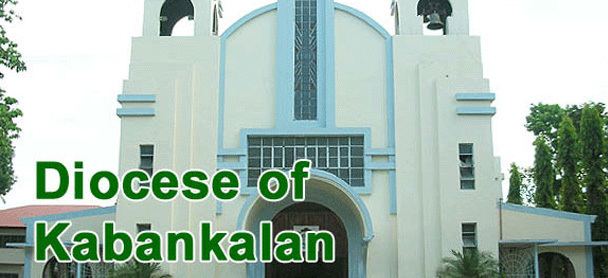Country Region Western Visayas | Population 166,970 (2007) Area 697.35 km2 Mayor Isidro P. Zayco | |
University Fellowship Baptist College | ||
Map of Kabankalan
Kabankalan, officially the City of Kabankalan, (Hiligaynon: Dakbanwa/Syudad sang Kabankalan; Cebuano: Dakbayan sa Kabankalan; Tagalog: Lungsod ng Kabankalan), or simply Kabankalan City, is a 1st class city in the province of Negros Occidental, Philippines. According to the 2015 census, it has a population of 181,977 people making it the second most populous city in the Negros Occidental next to Bacolod City.
Contents
- Map of Kabankalan
- Sinulog de kabankalan 2014 abrgy camingawan
- Panaad 2013 first runner up udyakan sa kabankalan
- Geography
- Accessibility
- Climate
- Barangays
- History
- References

Kabankalan is also the 2nd city with the highest gross income in Negros Occidental next to Bacolod. In terms of land area, Kabankalan City is the second largest city in Visayas next to Bayawan City with a total area of 697.35 km2

The city hosts three major festivals: the Kabankalan Sinulog every third Sunday of January (celebrated together with Cebu City), Udyakan sa Kabankalan and the Charter Anniversary. Kabankalan is also known for its Mag-aso Falls and the Balicaocao Resort. Also located in the city is the main campus of the Central Philippines State University (CPSU).

Kabankalan City won the major award as the "Best Performing City" in Region VI in the 2011 Regional Search for Excellence in Local Governance (EXCEL). The award was given during the Pagdayaw 2011 program held at the Iloilo Grand Hotel in December 2011.
Sinulog de kabankalan 2014 abrgy camingawan
Panaad 2013 first runner up udyakan sa kabankalan
Geography
Kabankalan occupies the central portion of the Southern Negros Island and its geographically located at 10° north and 122° east. It is bounded on the north by the City of Himamaylan, on the northwest by Panay Gulf, on the southwest by the Municipality of Ilog and on the southeast by the Province of Negros Oriental. It is 90 kilometers away from Bacolod City and 100 kilometers from Dumaguete City and the southern most town of Hinoba-an. With an area of 697.95 square kilometers, it is the largest city in Negros Occidental and the second largest in the whole Negros Island Region, after Bayawan City (which has an area of 699.08 square kilometers).
Accessibility
Kabankalan is over an hour's drive south of Bacolod City by private car while public utility vehicles reach the place in about two hours. The city, which serves as the hub of economic activities in southern Negros, is also the take-off point for various destinations down south, and links the province to Dumaguete City, capital of Negros Oriental, via the Kabankalan-Mabinay Highway. Its location roughly halfway between Bacolod and Dumaguete made it to host the regional center of the then Negros Island Region, along with neighbouring Mabinay to its southeast in Negros Oriental. Once completed, the Kabankalan City Domestic Airport will be the second active airport in the province (after the Bacolod-Silay International Airport).
Climate
Kabankalan has Type 3 climate condition which means dry season is from December to May while the rainy season is from June to November. Average temperature is 26 degrees Celsius (80 degrees Fahrenheit).
Barangays
Kabankalan City is politically subdivided into 32 barangays.
History
According to historians, the first inhabitants of Kabankalan were people who came from neighboring towns. They derived the name Kabankalan from the word “Bangkal” a species of trees which is abundant in the place. The settlers established the Barangay form of government, which every group has its own leader called the Capitan.
In early years, Kabankalan started as a barrio of Ilog, a neighboring town of the city today. When Kabankalan turned into a town in 1903, its first town president was Capitan Lorenzo Zayco, but in mid-1907 a group of rebel called “pulahan” led by Papa Isio raided the town and burned all the houses. However, the people of Kabankalan quickly recovered and rebuilt the town from destruction caused by the dissidents.
During the Spanish regime, the people were taught by the Spanish with their language and introduced the Roman Catholic religion. When the Americans came they introduced the democratic form of government. During this time, a lot of improvements came through to the town and new modern techniques of farming were introduced by the Americans to the local farmers that give them good products.
After the American regime, another invader occupied the town of Kabankalan: the Japanese, and during this time, a recognized guerrilla unit and local troops of the Philippine Commonwealth Army military units was formed to oppose the foreign aggression and many people fled to the mountain to avoid the Japanese military abuse but when Americans returned in the island to aiding Filipino soldiers under the Commonwealth Army and Constabulary and the recognized guerrillas, they helped the people to be freed from the Japanese.
After the second World War, the town progressed and started to regain its economy. The establishment of two sugar mills in the 1960s and early 1970s gave the town a boost into the list of the top improving towns of Negros.
The town of Kabankalan was declared by then President Fidel V. Ramos as a chartered city on August 2, 1997, under Republic Act No. 8297.
